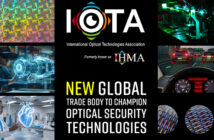With the recent terrorist attack at the Boston Marathon and the subsequent release of the suspects on surveillance video the discussion and the debate for CCTV will seem to favour the supplier, but responsibility needs to shift to the supplier as well.
London, UK. 23rd April 2013. The attack at the marathon highlighted many things in the security world which make the argument easy for suppliers like us to reach out and state how important CCTV can be to catch the offenders. But we, as a company, look at it from an angle that it is our responsibility then to advise the best way to use the technology available so that it is comfortable to all sides. Law enforcement want a clear images quickly, the public want to have a non intrusive environment and civil liberty organisations want to maintain the privacy and ensure transparency.
Many a time, even on a small scale like a house burglary, there is a knee jerk reaction and to create a “lock down” environment. Fear can do that and quite understandably it is something which is driven through emotion, to fight back. It is therefore the job of the CCTV company, especially now, to be more advisory on an end operators level rather than a technical level. The internet is bringing together many ideas and experiences to perform the best procedures for effective social and business activity. Businesses in general need to embrace this. As a traditional security provider we have adapted our own “mantra” to provide solutions rather than security. This procedure is underpinned by the peripheral technology and our understanding of it by working with other collaborators.
The Boston incident did show that within a few days thousands of hours of video (even from peoples own smart mobile devices) had been processed pretty quickly and that suspects were identified. The notable point from the released video is that the other members of the public were blurred out. The context of the video was used to show the suspects moving and being part of the day and within the crowd. This would have been a need to show them moving around to try and jog the memory for anyone who would have noticed anything, even for that small scrap of information. The move of releasing video therefore was to create a sort of real picture of people moving and walking. The images were clear enough for people who knew the suspects to be able to identify them.
The importance of the search obviously outweighs any privacy issues. The video was released with blurred faces but identifiable bodies and potentially there would have been some privacy breaches. Not that anyone would envisage complaining about the release and publishing of the images (but then who would expect people to bomb a public place). The point for privacy then is in every day lives and being able to provide security and safety, through the positive attributes of CCTV, balanced with the negative use which is based around the privacy.
An antiquated system reduces the ability to retrieve data quickly and is costly so any data protection act breach is cheaper through penalty or even the risk of a complaint than to try and pinpoint a camera and then the image. IP CCTV will actually aid the control of the images for the end user, such as law enforcement, as well the subjects or members of the public. This will mean that as long as the procedure for retrieval is tight then the balance is met. The legislation needs to move with the technology to make sure that the main aim of security is to protect people.





